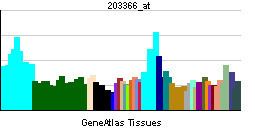Species Human Entrez 5428 | Human Mouse Ensembl ENSG00000140521 | |
 | ||
Aliases POLG, MDP1, MIRAS, MTDPS4A, MTDPS4B, PEO, POLG1, POLGA, SANDO, SCAE, polymerase (DNA) gamma, catalytic subunit External IDs MGI: 1196389 HomoloGene: 2016 GeneCards: POLG | ||
DNA polymerase subunit gamma is an enzyme that in humans is encoded by the POLG gene.
Contents
Function
POLG is a gene that codes for the catalytic subunit of the mitochondrial DNA polymerase, called DNA polymerase gamma. The human POLG cDNA and gene were cloned and mapped to chromosome band 15q25. In eukaryotic cells, the mitochondrial DNA is replicated by DNA polymerase gamma, a trimeric protein complex composed of a catalytic subunit of 140 kDa encoded by the POLG gene and a dimeric accessory subunit of 55 kDa encoded by the POLG2 gene. The catalytic subunit contains three enzymatic activities, a DNA polymerase activity, a 3’-5’ exonuclease activity that proofreads misincorporated nucleotides, and a 5’-dRP lyase activity required for base excision repair.
Clinical significance
Mutations in the POLG gene are associated with several mitochondrial diseases, including Alpers' disease, ataxia-neuropathy disorders, and dominant and recessive forms of progressive external ophthalmoplegia. A list of all published mutations in the POLG coding region and their associated disease can be found at the Human DNA Polymerase Gamma Mutation Database.
